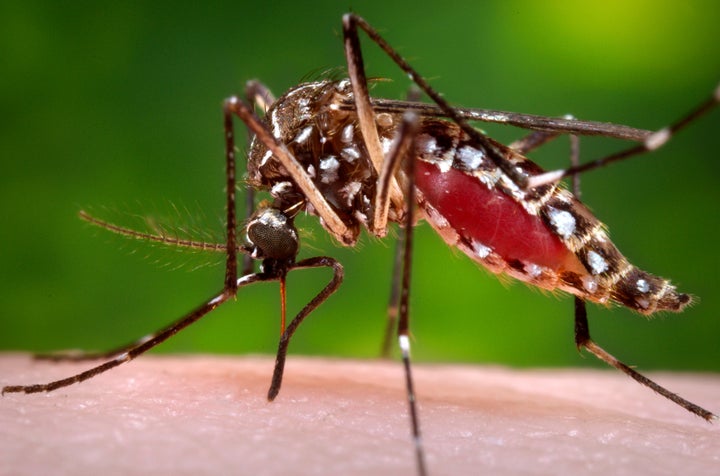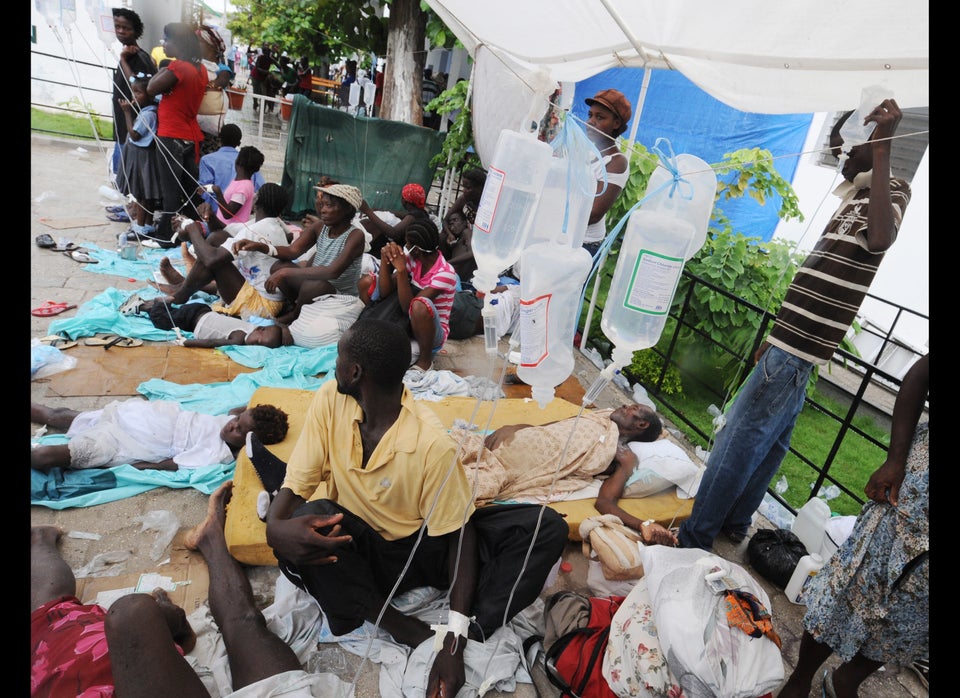
The world may be fixated on Zika virus, but in Angola, there’s a more pressing infectious disease spread by mosquitos to worry about.
A yellow fever outbreak that began in the capital city of Luanda in December has infected 450 people and killed 178, according to the World Health Organization. The mosquito-transmitted disease has since spread to six of Angola’s 18 provinces.
“Yellow fever, in and of itself, is a bad disease,” Dr. Gregory Poland, head of the Mayo Clinic’s Vaccine Research Group and editor-in-chief of the journal Vaccine, told HuffPost. According to the WHO, the disease affects between 84,000 and 170,000 people each year, killing about 60,000 annually.
In stage one of the disease, symptoms of yellow fever include fever, muscle pain, backache, headache, shivers, appetite loss, nausea and vomiting. If a patient moves into stage two, he or she can develop jaundice, abdominal pain and bleeding from the mouth, nose, eyes or stomach, and bloody vomit or feces.
If left untreated, survival rates are poor for second-stage yellow fever, which affects about 15 percent of people who become infected. Fifty percent of severely affected people who don’t receive treatment die. Unfortunately, it’s notoriously difficult to diagnose yellow fever, the early symptoms of which are similar to other viruses including dengue, Zika, West Nile, severe malaria and viral hepatitis.
There’s no cure for yellow fever, and treatment is limited to supportive care, such as blood pressure management, administering fluids and in some cases, dialysis to manage kidney failure.
However, there is a highly effective yellow fever vaccine that’s been around for roughly 80 years. The microbiologist who developed it won a Nobel Prize for his efforts in 1951.
Unfortunately for poor countries like Angola, limited infrastructure makes implementing routine vaccination programs tricky, if not impossible. Those structural challenges are compounded by the fact that there are only four facilities worldwide ― one private and three government-owned ― that produce yellow fever vaccine, according to NPR.
“Yellow fever is a forgotten disease,” Dr. William Perea, coordinator of the control of epidemic diseases for the WHO told NPR. “I mean, who cares about yellow fever? Basically, the markets [for yellow fever vaccine] are poor countries in Africa and some countries in Latin America.”
South America and Africa, particularly jungle areas, are at higher risk. Despite similar climates in Asia, which includes tropical regions and plenty of mosquitos, yellow fever has never been reported there ― a phenomenon that scientists don’t know how to explain.
Yellow fever is thought to have originated Africa, and traveled to the Americas on slave ships. Monkeys can also be infected by the virus, and they continue to give scientists a hint that the disease is on the move.
“In Africa and in some parts of South America, the first clue that you might have yellow fever is that monkeys in the jungle start dying,” said Dr. Anna Durbin, an associate professor at Johns Hopkins Bloomberg School of Public Health.
If health experts suspect that yellow fever is present in a community, they’ll do a mass vaccination program to control the outbreak. But since large outbreaks aren’t common, there’s a limited stockpile of yellow fever vaccine.
In Angola, the limited stockpile is a major problem, at least for now. The WHO sent its entire yellow fever vaccine arsenal ― 6 million doses in total, according to STAT ― to battle Angola’s outbreak. It’s not nearly enough for country of almost 20 million people.
“We’ve seen this situation before, unfortunately, where the outbreak or the number of people that need to be vaccinated is larger than the number of doses of vaccine that we have,” Durbin said.
Economics could play a part in the recurring vaccine shortage. “The demand is big in countries that can’t afford the vaccine,” Poland said.
Durbin thinks that the vaccines’ manufactures will likely be able to ramp up yellow fever vaccine production in the face of the outbreak. “It’s a live vaccine, which means they can produce it fairly quickly,” she said. “I do think that they’ll have enough vaccine to interrupt the outbreak.”
Still, Durbin felt it could take a few weeks to a couple of months to vaccinate everyone, depending on whether or not some community members were previously immunized against yellow fever. (According to WHO, a single dose of yellow fever vaccine is sufficient for life-long immunity. The U.S. government recommends an additional booster shot for some travelers.)
Is United States at risk for yellow fever?
Although the U.S. suffered a yellow fever epidemic during the 19th century, including outbreaks in Boston, Baltimore, New York City and Philadelphia, the U.S. isn’t considered a yellow fever transmission country today thanks to the elimination of mosquito breeding grounds and use of pesticides.
Still, the U.S. has a thriving mosquito population. “In the Northeast and the Southwest the mosquito vector is already in place,” Poland said. “Are we going to see it here? It’s an open question.”
Chances of yellow fever affecting Americans are lowered when the disease is addressed when and where it crops up abroad. Durbin is optimistic this will be the case with Angola.
“I think the yellow fever outbreak [in Angola] is going to be handled relatively easily, because we have a vaccine that we can deploy,” she said. “There may be a shortage, it may take a little while to get enough doses, but I know we have an effective vaccine that can work.”
Why you need to pay attention to infectious disease reports
Infectious disease outbreaks and flareups are common. “If you look at the U.S. since the ‘80s, we’ve had an outbreak or concern of new agents every year or three years,” Poland said, listing Lyme disease, West Nile, Zika, Ebola, MERS and SARS as a few examples. “It’s just been one after another.”
With the constant threat of disease, an ever-more-global population, and boom and bust media attention, it’s unsurprising that news consumers are fatigued by the reports of another infectious outbreak. But this can be to their own detriment.
“There’s just not the political and financial will of governments and people to demand the kind of protection they should have,” Poland said. “It’s hard to sustain people’s attention. As soon as they seem to simmer down, governments lose interest and they are on to the next crisis.”
“We always seem to be behind the curve on things,” Durbin lamented. “Money is a major issue. We don’t have funding. Nobody is interested in these things until they happen. Nobody is interested in the maybes and what-ifs.”
As of late March, 5.7 million people in Angola had been vaccinated for yellow fever using the WHO stockpile.
